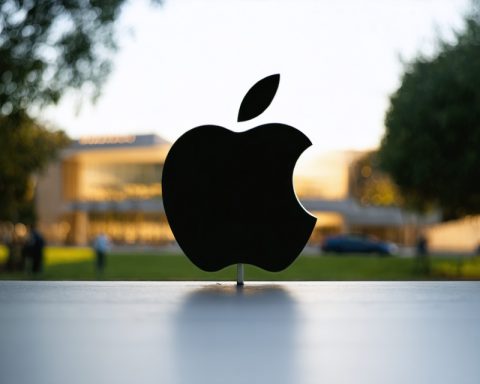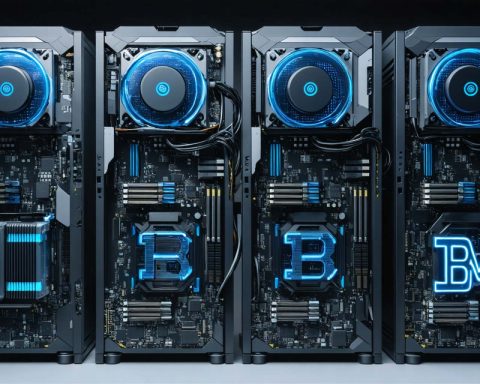An Innovative Milestone in AI Development
The realm of artificial intelligence has welcomed a new challenger, DeepSeek, a Chinese startup that recently dethroned OpenAI’s ChatGPT to secure the top spot in the US free app store. Founded by Liang Wenpeng, a seasoned hedge fund manager with an academic background from Zhejiang University, DeepSeek is a beacon of innovation within the competitive AI landscape.
Established in 2023, DeepSeek emerged as a spinoff from Hiflyer, a quantitative hedge fund Liang co-founded in 2016. Utilizing machine learning models, Hiflyer was initially focused on market predictions and data-driven investments until its AI research division broke off to pioneer DeepSeek. This shift allowed them to concentrate on large language models and artificial general intelligence.
DeepSeek recently ignited interest with the release of its R1 model, making waves for its comparable performance to OpenAI’s offerings. Its open-source nature enables all AI developers to benefit from its advanced capabilities. Users have praised the model for its efficiency in writing and problem-solving, although it does exhibit limitations in discussing certain politically sensitive topics related to China.
Liang emphasizes the importance of shifting from imitation to originality in AI development, highlighting China’s potential to build a robust technological ecosystem rather than remaining a follower.
The Implications of DeepSeek’s Rise in the Global AI Landscape
The emergence of DeepSeek has profound implications, not only for the technology sector but also for society and the global economy. As AI becomes increasingly integrated into various domains, this development could signal a shift in the balance of tech power. With its ascent over established players like OpenAI, DeepSeek illustrates China’s growing influence in the AI arena. This could lead to heightened competition in AI ethics, regulation, and governance, fostering a global dialogue about standards and best practices.
Furthermore, as DeepSeek champions an open-source model, it may democratize access to AI technology. This has the potential to spur innovation across industries worldwide, as smaller developers can leverage DeepSeek’s capabilities without the formidable resources typically required. Such a shift could catalyze startup ecosystems in regions previously lagging behind, ultimately leading to a more equitable distribution of technological advancement.
However, the rise of AI startups like DeepSeek brings with it environmental concerns as well. The increased energy consumption associated with training large language models raises important questions about sustainability. AI development must reconcile technological progress with ecological responsibility to mitigate its carbon footprint.
In the long term, as AI systems become more embedded in daily life, the focus on originality and ethical considerations will be paramount. Ultimately, companies like DeepSeek may redefine the landscape of artificial intelligence, shaping trends in AI governance, application, and innovation for generations to come.
DeepSeek: The New Powerhouse in AI Landscape
The Rise of DeepSeek
In the fast-paced world of artificial intelligence, a new contender named DeepSeek has emerged, swiftly capturing attention by ranking at the top of the US free app store, surpassing even the widely acclaimed ChatGPT. Founded by Liang Wenpeng, a hedge fund veteran with a rich academic background from Zhejiang University, DeepSeek signifies a significant stride in AI innovation.
Key Features and Innovations
DeepSeek was established in 2023 as a spinoff from Hiflyer, a quantitative hedge fund that Liang co-founded in 2016. This startup has specifically directed its focus towards artificial general intelligence and large language models. The company’s latest breakthrough, the R1 model, boasts performance levels comparable to those of mainstream AI applications, drawing interest from developers and businesses alike.
Advantages of the R1 Model
– Open-Source Availability: The R1 model’s open-source framework allows developers to utilize and refine its capabilities without the usual restrictions seen in proprietary models.
– Efficiency: Users have reported that the R1 model excels in writing, generating content swiftly and accurately.
– Versatile Problem-Solving: Its problem-solving capabilities have impressed users across various sectors, from academics to commercial enterprises.
Limitations and Concerns
Despite its strengths, the R1 model does have limitations, particularly in discussing politically sensitive subjects related to China. This constraint may affect its usability in academic research or open dialogue sectors that require nuanced discussion on such topics.
Pros and Cons of Using DeepSeek
Pros:
– Highly Efficient and Versatile: Offers a robust tool for various applications including writing, coding, and data analysis.
– Community-Driven Improvements: Open-source nature encourages collaborative enhancements from a global community of developers.
Cons:
– Political Sensitivity: Limitations in certain discussions may restrict its applicability in sensitive contexts.
– Early Stage Product: Being newly developed, there might be untested aspects that could affect reliability in critical applications.
Pricing and Market Impact
DeepSeek’s offering is currently free to users, allowing for broad accessibility and fostering rapid adoption among a diverse user base. This strategic pricing model positions DeepSeek to quickly gain market share against established competitors like OpenAI by lowering barriers for entry.
Predictions and Future Trends
As DeepSeek continues to evolve, the AI community is watching closely for innovations that could redefine AI development paradigms. Liang Wenpeng’s focus on originality rather than imitation suggests that DeepSeek may push the boundaries of what AI can accomplish, positioning itself as a key player in the global tech ecosystem.
Conclusion
With its innovative R1 model and a commitment to advancing AI technology, DeepSeek is emerging as a formidable competitor in the field. As it navigates challenges related to sensitivity and product maturity, the potential for significant contributions to artificial intelligence remains high.
For more insights into AI trends and technologies, visit our main site.










